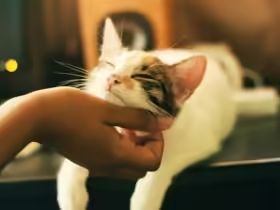Dogs and cats are more than just companions; they are intelligent animals with emotional and cognitive needs. While physical exercise is well-recognized as essential for a pet’s health, mental stimulation is often overlooked. Mental stimulation is critical to keeping your pet engaged, reducing boredom, and promoting overall happiness.
In this blog, we’ll explore why mental stimulation is essential for dogs and cats, the benefits it offers, and effective ways to keep your pets mentally active.
Why Mental Stimulation is Important
1. Prevents Boredom and Destructive Behavior
Just like humans, pets can get bored if they don’t have enough to occupy their minds. Boredom in dogs and cats can lead to destructive behaviors like chewing, scratching, or inappropriate elimination. By keeping them mentally stimulated, you can prevent these unwanted behaviors and maintain a calm, well-behaved pet.
2. Enhances Cognitive Function
Providing mental stimulation helps to enhance cognitive function and maintain sharpness, especially as your pet ages. Cognitive decline can affect older pets, leading to confusion and memory problems, similar to dementia in humans. Activities like puzzle games or training exercises can help keep their brains sharp and delay cognitive decline.
3. Strengthens the Bond Between Pet and Owner
Engaging your dog or cat in mental activities provides an opportunity for quality interaction. Whether you’re teaching a dog a new trick or playing a fun game with your cat, the time spent together helps build a stronger bond. Pets that receive regular mental stimulation tend to be more attentive, responsive, and affectionate toward their owners.
4. Reduces Anxiety and Stress
Dogs and cats can experience anxiety or stress due to various factors such as separation anxiety, changes in their environment, or unfamiliar situations. Mental stimulation can alleviate these issues by redirecting their focus and helping them cope with stressors. For example, a cat that enjoys interactive toys is less likely to feel anxious when left alone.
5. Improves Behavioral Training
Mental exercises, such as obedience training or interactive games, can improve your pet’s behavior. These activities teach dogs and cats discipline and help reinforce positive habits. For example, training your dog to follow commands like “sit,” “stay,” or “fetch” challenges their brain while reinforcing good behavior.
How to Provide Mental Stimulation for Dogs
Dogs thrive on mental challenges, so providing them with various activities will keep them happy and mentally engaged.
1. Puzzle Toys
Puzzle toys, such as treat-dispensing puzzles, are an excellent way to stimulate a dog’s brain. These toys require them to think and figure out how to release the treats. You can also use food puzzles that make them work for their meal, helping them to expend energy while eating.
2. Training Sessions
Dogs love to learn, and training is one of the best ways to keep their minds sharp. Whether you’re teaching basic commands or more advanced tricks, training provides both mental stimulation and discipline. Incorporate short, regular training sessions to keep your dog engaged and reward them with treats or praise for their success.
3. Interactive Games
Playing interactive games like fetch, hide-and-seek, or tug-of-war is a fun way to stimulate your dog’s brain. For hide-and-seek, hide treats or toys around the house and let your dog find them. This encourages them to use their natural hunting instincts and keeps them focused.
4. Rotating Toys
Dogs can quickly become bored with the same toys, so rotating their toys regularly keeps things interesting. Introduce new toys or bring back old ones that have been hidden for a while. This small change can create excitement and re-engage their interest.
5. Doggy Playdates
Socialization is a form of mental stimulation for dogs. Arranging playdates with other dogs provides your pet with new experiences and challenges as they interact and communicate with their peers. Social interactions help to develop your dog’s communication skills and prevent boredom.
How to Provide Mental Stimulation for Cats
Cats are naturally curious creatures, and mental stimulation is vital to their well-being. Here are some ways to keep your feline friend’s mind active.
1. Interactive Toys
Cats love to play with toys that mimic their natural prey, such as feather wands, laser pointers, or motorized mice. These toys encourage them to chase, pounce, and stalk, simulating their hunting instincts and providing great mental stimulation.
2. Puzzle Feeders
Similar to dogs, cats benefit from puzzle feeders. These devices make cats work for their food by solving a puzzle to release kibble or treats. Puzzle feeders not only provide mental engagement but also help slow down eating, which is beneficial for cats that tend to overeat.
3. Cat Trees and Climbing Structures
Cats love to climb and explore different levels. Installing cat trees or shelves in your home gives your cat a chance to climb, scratch, and explore. These structures keep your cat entertained, allowing them to observe their surroundings from different vantage points, which is mentally stimulating for them.
4. Hide-and-Seek Games
Cats enjoy hiding and finding things, so games like hiding their favorite toy or treat in different places can keep them mentally engaged. You can also create DIY hiding spots by using boxes, paper bags, or tunnels, encouraging your cat to explore and satisfy their curiosity.
5. Window Watching
Provide a comfortable perch near a window where your cat can watch birds, squirrels, or people outside. Watching the world go by is a stimulating activity for many cats and can keep them occupied for hours. Adding a bird feeder near the window can further increase their interest and excitement.
Tailoring Mental Stimulation to Your Pet’s Age and Energy Level
The mental stimulation needs of your pet will vary depending on their age, breed, and energy level. Here’s how to adjust activities based on these factors:
1. Puppies and Kittens
Young pets, such as puppies and kittens, are eager learners and full of energy. Short, interactive play sessions are ideal for them. Introduce simple puzzles, toys, and basic training to challenge their developing minds. Ensure that the activities are engaging without being overwhelming.
2. Adult Dogs and Cats
Adult pets may have more specific preferences when it comes to mental stimulation. Focus on activities that align with their temperament and interests. For example, highly active dogs may prefer fetch or agility training, while a more laid-back cat might enjoy puzzle feeders or interactive toys.
3. Senior Dogs and Cats
Older pets may experience cognitive decline, so keeping their minds active is especially important. Adjust the level of difficulty in mental exercises to match their physical abilities and endurance. Gentle training, slower-paced puzzle games, or soft toys can keep them engaged without putting strain on their bodies.
Signs Your Pet Needs More Mental Stimulation
It’s essential to recognize the signs that your dog or cat may not be getting enough mental stimulation. These include:
- Excessive Chewing or Scratching: Pets often act out when they’re bored, so destructive behavior could be a sign they need more mental engagement.
- Restlessness: If your pet is pacing, whining, or constantly seeking attention, it may indicate that they are mentally under-stimulated.
- Overeating: Boredom can lead to overeating in both cats and dogs. Offering mentally stimulating activities can help reduce their food fixation.
- Lack of Interest in Toys: A lack of excitement around toys may suggest your pet needs a variety of new, challenging activities.
Conclusion
Mental stimulation is a crucial aspect of your pet’s overall well-being. Providing your dog or cat with engaging activities that challenge their mind can prevent boredom, improve behavior, strengthen your bond, and support cognitive health. Whether it’s through puzzle toys, interactive games, training, or new experiences, there are plenty of ways to keep your pet mentally sharp. By investing time in their mental well-being, you’re ensuring that your furry friend lives a happier, healthier, and more fulfilling life.











Leave a Reply